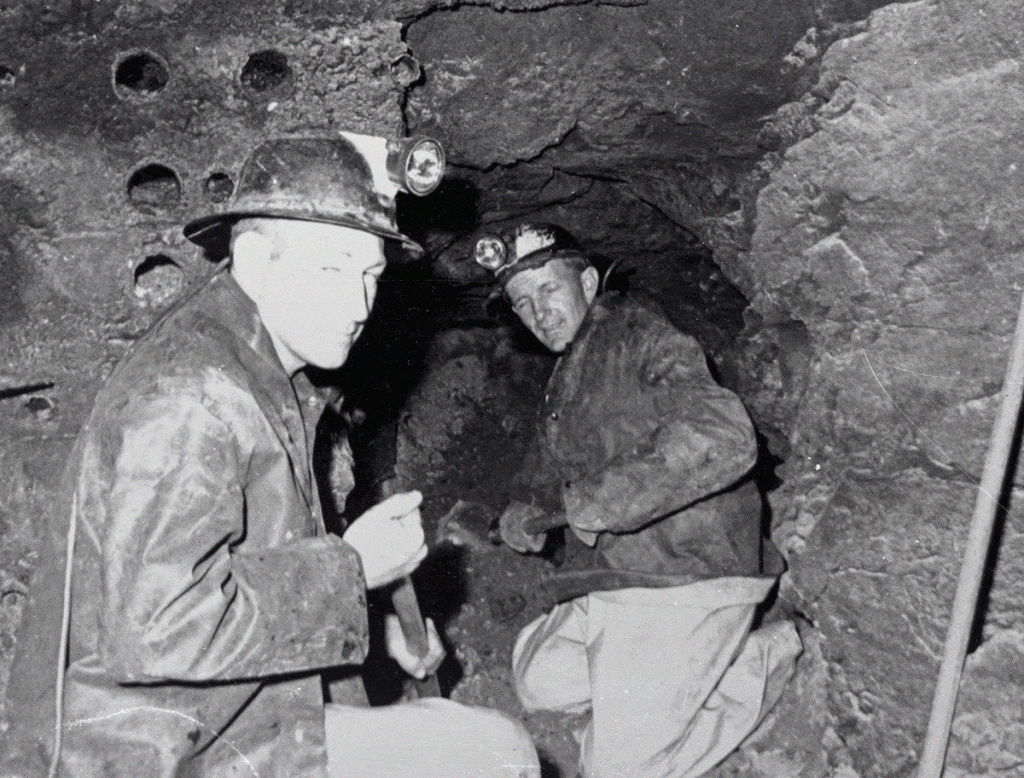
Credit: Park City Historical Society and Museum, Kendall Webb Collection
Between July 1952 and 1953, Park City lost nearly one third of its population. Lead-zinc and silver prices had fallen drastically and laid stagnant at depressed prices. Silver King Mining Coalition and Park Utah Consolidated Mines both had to cease operations because the cost of digging was greater than what could be made from any ore pulled out of the mountains. Nearly 800 miners were laid off.
Business Week Magazine wrote of Park City that:
Parts of the once-thriving town already look like a ghost village. Houses stand empty with their windows smashed. Half the stores in town are boarded up. Many have been closed for some time, but at least eight have gone out of business since last December. The population… is now down to about 1,500.
The Park Record called the town “an island of depression in Utah’s prosperous, expanding economy.” Miners were hoping that mining companies could lobby Congress to improve the prices of precious metals, but there was little prospect of that.
Despite the hardships, Parkites were optimistic about the future. After they shut down, the Silver King Mining Coalition and Park Utah Consolidated Mines merged to form the United Park City Mines Company. The headline for a July 9, 1953 Park Record story on the subject was “Optimism Prevails in Park City Area.” Parkites were not ready to give up on the town despite the low prices of the metals they mined. Many residents were calling the merger the “best thing that ever happened to Park City,” according to the Park Record story.
W.H.H. Cranmer, the president of New Park Mining Company out of Keetley helped keep Park City optimistic. Cranmer believed that the prices of metals would come back up as he thought the demand for them was about to explode. That, in combination with the merger, would “restore the Park City area to prominence” in the mining industry. The Park Record noted that “people listen to Mr. Cranmer when he talks about the Park City area.”
Cranmer believed that the domestic market would remain about the same, but that the London market would need Park City metals in anticipation of London cutting back on imports from Mexican lead mines.
United Park Mines became Park City Ventures in 1970. They leased to Noranda in 1978, who stopped producing ore in May 1981. New Park Mining leased their mines to several companies beginning in 1957. The last company bought the surface rights of the company’s mine areas for recreation, as Park City was transitioning to a ski destination.
Although mining lasted until 1981, the town remained depressed through the 1950s and into the 1960s before travelers arrived in Park City to find good ski spots. Ever since, Park City has relied on the surface of its mountains rather than the ore deposits.